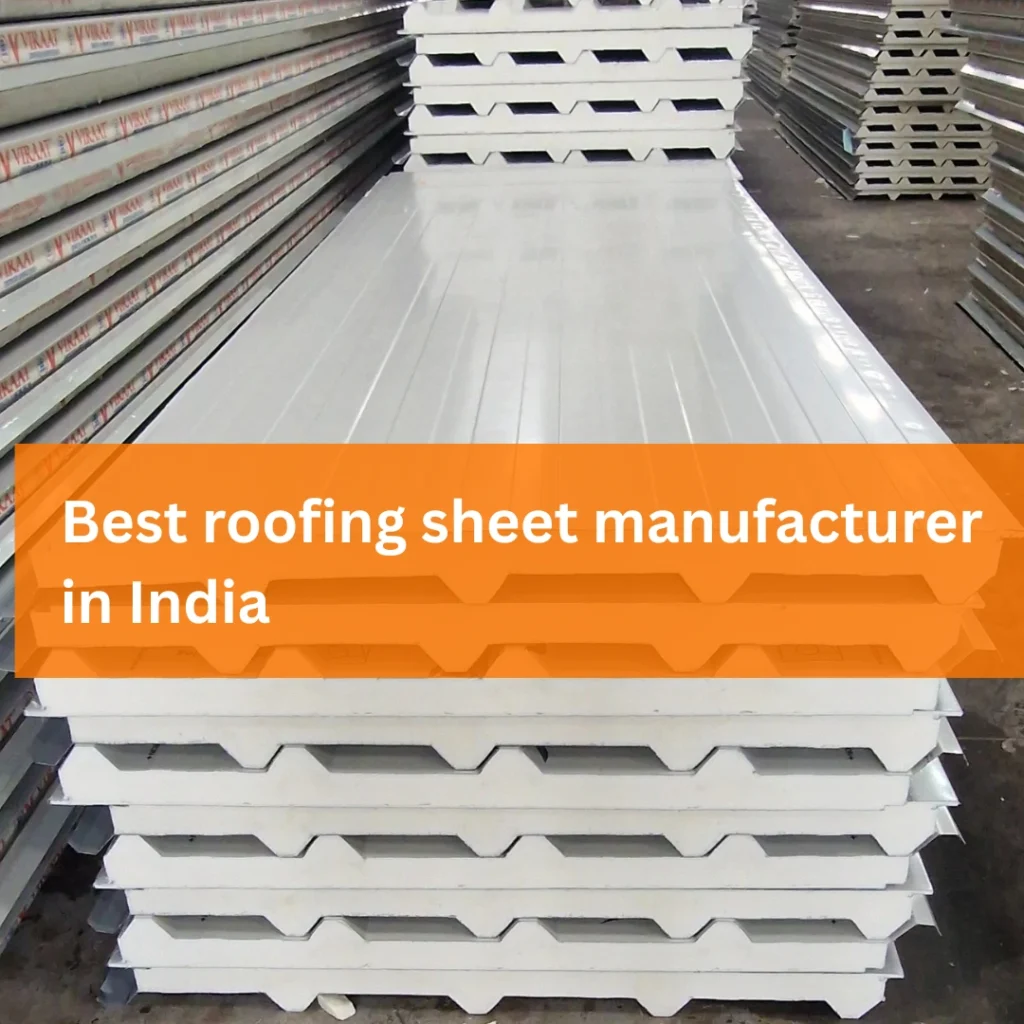
The Future of Roofing: How Modern Roofing Sheets Are Manufactured for Strength & Style
Roofing serves as more than just overhead protection—it’s your structure’s first defense against the elements and a vital element of its overall design. In today’s construction landscape, roofing sheets have evolved to combine strength, durability, and aesthetics. But have you ever wondered how these roofing sheets are manufactured to meet such high standards? Let’s take a closer look at the process, the types of roofing sheets, and why they’re essential for modern infrastructure.
Why Roofing Sheets Are in High Demand
From residential homes to industrial warehouses, roofing sheets are the go-to choice for builders and architects. They are lightweight, cost-effective, and offer excellent protection against harsh weather conditions. Their versatility fuels the rise in demand, as they are used in:
Industrial and commercial buildings
Agricultural structures
Residential homes
Warehouses and storage units
Recreational facilities and more
With such wide applications, manufacturers are focusing on producing sheets that offer superior performance and a longer lifespan.
The Roofing Sheet Manufacturing Process and Step-by-Step
Manufacturing roofing sheets is an exact process that blends technology, engineering, and quality control. Here’s how it’s done:
Raw Material Selection
The process begins with selecting high-grade raw materials such as steel, aluminum, or other metal alloys. For PUF (Polyurethane Foam) or PIR (Polyisocyanurate) insulated roofing sheets, materials like pre-coated galvanized steel (PPGI) or pre-coated galvalume (PPGL) are preferred for their corrosion resistance.
Cleaning and Pre-treatment
To ensure a flawless finish, the raw metal sheets undergo cleaning to remove any impurities like oil, dust, or rust. Pre-treatment also involves applying anti-corrosive coatings to extend the sheet’s durability.
Roll Forming
In this stage, the cleaned metal sheets are passed through a roll forming machine. This machine shapes the flat sheets into desired profiles such as corrugated, trapezoidal, or tile-like patterns. Roll forming ensures uniform thickness and strength throughout the sheet.
Insulation (for PUF/PIR Roofing Sheets)
For insulated roofing sheets, polyurethane foam or PIR is sandwiched between two metal sheets. This step involves:
Injecting foam between the outer and inner metal facings
Allowing it to expand and bond firmly
Achieving a seamless insulated panel for superior thermal performance
Cutting to Size
Advanced machinery cuts the roofing sheets to specified lengths as per the client’s requirements. Ensuring precise measurements is key for a flawless fit during installation.
Quality Testing
Every batch of roofing sheets undergoes rigorous testing for:
Thickness consistency
Load-bearing capacity
Corrosion resistance
Fire resistance (especially in PIR panels)
We ensure that only meticulously tested and superior-quality roofing sheets are dispatched from our facility.
Finishing and Packaging
Finally, the roofing sheets are coated with protective layers (like PVDF or SMP coatings) for enhanced UV resistance and color retention. They are then carefully packaged to prevent scratches or damage during transportation.
Types of Roofing Sheets

At leading manufacturing facilities like Viraat Industries, a variety of roofing sheets are produced to meet diverse customer needs:
Metal Roofing Sheets
Crafted from high-quality galvanized steel or aluminum, these roofing sheets are perfect for use in industrial and commercial buildings.
PUF & PIR Insulated Roofing Sheets
Ideal for cold storage, industrial warehouses, and structures that demand superior thermal insulation. They reduce energy costs and maintain interior temperature.
Polycarbonate Sheets
Lightweight and highly transparent, these are used in skylights and greenhouses.
Corrugated Roofing Sheets
Traditional yet popular, they are preferred for agricultural buildings and sheds.
Why Quality Matters in Roof Sheet Manufacturing
Not all roofing sheets are created equal. Low-quality products can lead to leaks, corrosion, and costly repairs. That’s why top manufacturers emphasize:
High-grade raw materials
Advanced machinery for precision
Strict quality checks at every stage
When you choose a reputable manufacturer, you’re investing in roofing sheets that last decades, withstand harsh climates, and enhance the aesthetic appeal of your property.
Viraat Industries: Setting the Standard in Roofing Sheet Manufacturing

At Viraat Industries, we take pride in delivering world-class roofing sheets that are trusted across India. Our state-of-the-art manufacturing units use cutting-edge technology to produce PUF, PIR, and metal roofing sheets tailored to every application. With a focus on durability, thermal efficiency, and aesthetic excellence, we are the preferred choice for architects, contractors, and homeowners nationwide.
Whether you’re building a cold storage, industrial shed, or residential home, our roofing solutions provide unmatched protection and performance.
Final Thoughts Roofing sheets are more than just building materials—they’re a vital component of your project’s success. By understanding the manufacturing process and choosing the right supplier, you can ensure long-lasting protection and superior value for your investment.
Where quality counts, trust the name that delivers. Choose Viraat Industries
Frequently Asked Questions
Regular cleaning, inspection for rust or damage, and timely repairs ensure a long lifespan and optimal performance of roofing sheets.
Yes. Manufacturers often provide warranties ranging from 10 to 30 years, depending on the product type and coating quality.
The ideal thickness depends on the structure’s purpose and local weather. Thicker sheets (0.47 mm–0.60 mm) are preferred for industrial use, while thinner sheets may suit residential or temporary structures.
Yes. Modern roofing sheets are designed to resist heavy rain, strong winds, and UV radiation. Specialized coatings also protect them from rust and corrosion in coastal or industrial areas.



